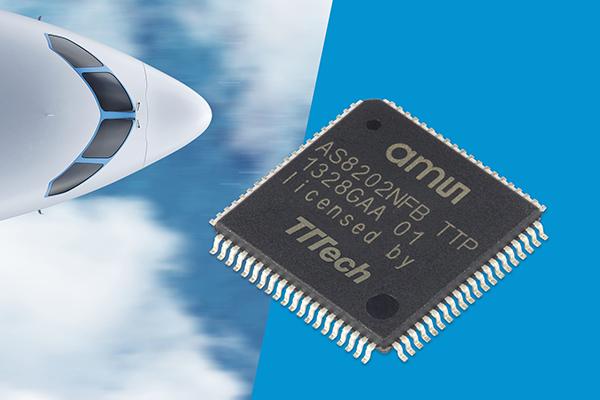- Achieving this milestone proves the reliability and wide application range of TTTech Aerospace’s TTP controllers.
- TTP® technology reduces the complexity when building distributed, fault-tolerant architectures.
- TTP® network controllers are integrated devices that meet the highest safety standards and form part of the communication systems in large commercial aircraft.
Vienna, Austria, November 3, 2021: TTTech Aerospace’s TTP controllers have accumulated more than 1 billion flight hours in safety-critical highly reliable DAL A (Design Assurance Level A) applications. The network controllers ensure highest dependability in core subsystems of large commercial aircraft, such as Boeing 787, Airbus A380, Airbus A220, Embraer E2, as well as business jets such as Embraer Praetor 500/600, Bombardier Global Express 7500 and several other aircraft programs in development.
The TTP controllers are based on the Time-Triggered Protocol (TTP®), an open standard (SAE AS6003) databus developed for reusable and modular integrated systems. TTP® is used by the world’s biggest aircraft manufacturers and their avionic systems suppliers in both commercial and business aircraft. There are over 20 different aircraft types and more than 1,400 commercial aircraft overall which have TTP®-based systems on board ensuring aircraft safety and availability in applications such as flight controls, power generation controls, environmental and engine controls.
“TTTech Aerospace is supplying its customers with products certified to the highest standards for availability and safety in aerospace (DAL A) for more than 20 years. We are extremely proud to have reached over one billion flight hours with our TTP® products, deployed in many of the key commercial aircraft programs initiated over the last 20 years,” says Christian Fidi, Senior Vice President Business Unit Aerospace, TTTech.
TTTech Aerospace’s TTP controllers haven proven to fulfil the highest reliability and safety standards for civil aviation in harsh environments, allowing OEMs and Tier 1’s to design solutions with best in class size, weight and power requirements while at the same time reducing aircraft lifecycle costs. Currently, TTP controllers accumulate over 200 million flight hours per year in commercial “More Electric Aircraft[1]” applications and are well suited for emerging eVTOL/UAM applications.
TTP controllers are certified with DO-254 and DO-178B according to DAL A compliance. TTP® provides excellent determinism to simplify avionics system certification, at much higher bandwidth than standard aerospace databus solutions like CAN, ARINC 429 or MIL-STD-1553. TTP controllers enable reliable network communication with up 4 Mb/s (line topology) or 20 Mb/s (star topology).
TTTech Aerospace also provides a range of certifiable DAL A network platform components and solutions based on TTP® technology: the entire DAL A network platform products portfolio including DO-160G Level 5 Physical Layer based on EIA/RS-485, TTP® embedded software/middleware, various gateway IP, with TTP® network configuration tools, as well as qualified TTP® network configuration verification and validation tools. This enables rapid development of complex integrated systems and controls for certifiable DAL A applications and system architectures.
Images

Download high resolution image

Download high resolution image
[1] The “More Electric Aircraft” concept applies to aircraft where either a high percentage or the majority of the aircraft’s systems are powered electrically.
Download as pdf
| English | German | French |